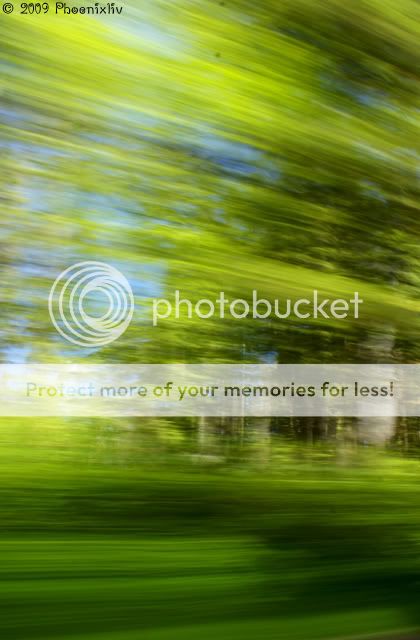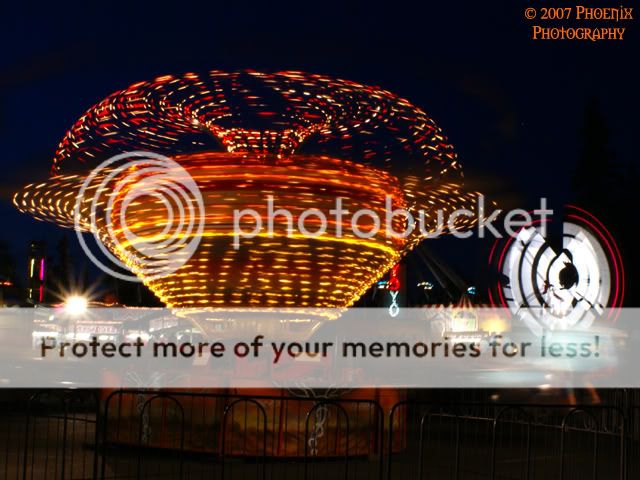There's 3 key parts for an exposure, you have your aperture, shutter speed and ISO.
I'm going to cover shutter speeds in this part. (This one will be rather short)
So, what is shutter speed?
Quote:
Well simply put shutter speed is a common term used to discuss the length of time a shutter is open.
The slower the shutter speed, the longer the shutter stays open and the more light is let in. So if you shoot at a 30th of a second (1/30) it’s HALF the light that gets let in than say a 60th of a second.
Now to understand shutter speed let’s take a close look at HOW it works.

So with all SLR’s you’ll have some sort of a mirror that flips up (Shown in RED), and a sensor/film (Shown in YELLOW). The basic operation is simple.
Here’s the mirror.

When the shutter is pressed and a photo is taken the mirror flips up.

Once the mirror flips up and is out of the way of the sensor the shutter and sensor is now free to shoot.

The front shutter begins to move out of the way of the sensor.

Now that the front shutter is out of the way of the sensor it is free to capture the light and make an image.

Then the rear shutter moves.

..

Once the sensor is covered back up the mirror flips down, and while it does that. The REAR shutter moves away so that the front shutter is back to the original place, in front of the sensor and is now ready to take another picture.

Now shutter speed is, like I said, the length of time the shutter remains open. So like you can see in the 5th picture, the shutter is “open” – it’s out of the way of the sensor and the sensor is now getting light.
Now your shutter speed is how long the shutter remains “open”. So if it’s 1/100th of a second, the shutter opens and once it’s fully opened and the sensor is exposed after 1/100th of a second the shutter closes. So the sensor only gets light for a hundredth of a second. If it’s really dark out and you take a shot at 20 seconds the shutter opens, and once the sensor is exposed it stays open for 20 seconds and then closes.
That’s really all there is to it. Now there are more things like 1st and 2nd curtain sync and sync speeds, but that’s basically how it works.
A faster shutter speed (Higher number) will stop fast moving objects, making them look like they’re floating in the air, sitting still, or doing nothing at all but it requires MORE light because the shutter isn’t open for a long amount of time. So if it’s bright and sunny out and youre outdoors taking photos at a park lets say.. You might be shooting at a 400th of a second, maybe even 1/ 4000th of a second.
A slower shutter speed (Lower number) gives a sense of movement to the subject, some examples of this you may have seen is like with pan/blurs, landscape/nature photos. But since the shutter is open for a longer time it can require less light the longer it’s open. So if it’s dark out you might need to shoot at a 5th of a second, or 10 seconds, or 30, or even more.
Now this ties into APERTURE. If you’re shooting with a small aperture like f16 it lets in LESS light so you’ll have to shoot at a slower shutter speed. If you’re shooting with a larger aperture like 2.8 if lets in MORE light so you’re able to shoot at a faster shutter speed.
In case you don’t remember or are too lazy to look or go back. Here’s that pic I showed before about apertures.

Now shutter speed is probably the MOST IMPORTANT because it effects how the image will look more than ISO or APERTURE.
If you have a slow shutter speed you have a greater opportunity for having a blurry image. And you almost ALWAYS want to at least shoot what the focal length of your lens is. So if you have a lens at 300mm, you’ll want a shutter speed of at LEAST 300mm. You might ask why, well the longer the focal length the greater the distance the light has to travel from the first piece of glass in the lens to the sensor.
So what exactly can you do with a fast or slow shutter speed? Well as much as I’d love to talk about that stuff, that’s for a different lesson and we’ll talk about pan/blurs, star trails and all that jazz.
Plus I’m tired razz
PS. Any questions, comments or concerns feel free to post a reply.




